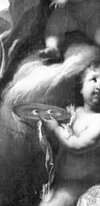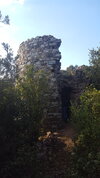Fenrir
Junior Member
- Messages
- 27
San Giovanni Gualberto, San Francesco d'Assisi e San Bernardo di Chiaravalle. Tutti e tre hanno un profondo legame con questa storia. 2 di loro sono presenti nel santuario della Madonna delle grazie.
Ma il buon Little Doctor non ci ha spiegato la scelta di dedicare a San Giovanni Gualberto la Chiesa della Valle Benedetta. Eppure non è cosa da trascurare...
(English)
San Giovanni Gualberto, San Francesco d'Assisi and San Bernardo di Chiaravalle. All three have a deep connection to this story. 2 of them are present in the sanctuary of the Madonna delle Grazie.
But the good Little Doctor didn't explain the decision to dedicate the Church of the Valle Benedetta to San Giovanni Gualberto. Yet it is not something to be overlooked ...
Ma il buon Little Doctor non ci ha spiegato la scelta di dedicare a San Giovanni Gualberto la Chiesa della Valle Benedetta. Eppure non è cosa da trascurare...
(English)
San Giovanni Gualberto, San Francesco d'Assisi and San Bernardo di Chiaravalle. All three have a deep connection to this story. 2 of them are present in the sanctuary of the Madonna delle Grazie.
But the good Little Doctor didn't explain the decision to dedicate the Church of the Valle Benedetta to San Giovanni Gualberto. Yet it is not something to be overlooked ...
Last edited by a moderator:


